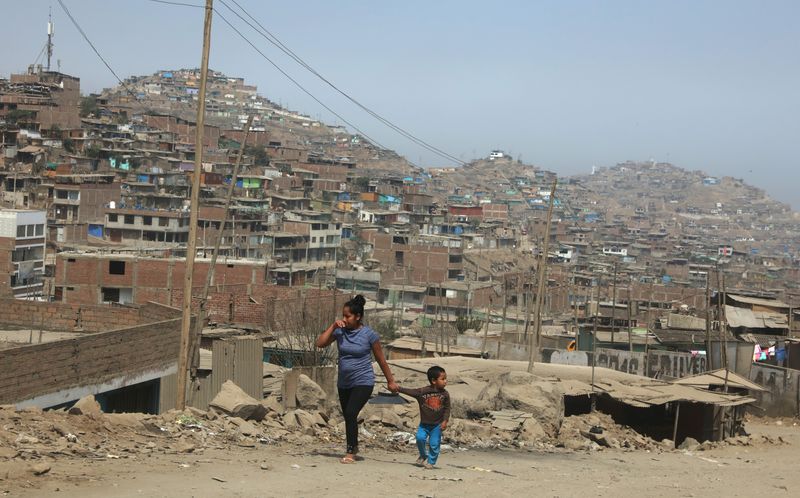By Marco Aquino
LIMA (Reuters) - Peru's poverty rate rose again last year, official data showed on Thursday, as South America's fourth biggest nation struggles to emerge from a painful recession amid ongoing political turbulence blamed in part for denting the economy.
Some 29% of the population is now classified as impoverished and disproportionately represented in rural villages and towns, according to the Andean country's statistics institute.
The figure, up 1.5% from the previous year, marks the second consecutive annual increase while approaching the decade-high of 30.1% recorded in 2020, when Peru faced travel and economic lockdowns intended to stem the COVID-19 pandemic.
In a new report, the INEI statistics agency calculated that some 596,000 more people had passed below the poverty line last year, bringing the total number of people living in poverty to some 9.8 million.
Peru's population stands at about 35 million.
Poverty rates hovered around 26% in cities while in rural areas, these reached as much as 40%. In four of Peru's 25 regions, mainly in Andean areas, INEI found that over 80% of people cannot access basics such as water, electricity, mobile phone services and internet.
INEI set the definition of poverty last year at per capita expenditures less than the value of basic food staples and services, or about 446 soles ($120) per month for one person.
Extreme poverty - defined as monthly income of less than 251 soles ($68) - rose last year by 0.7 percentage points to reach 5.7%, affecting 1.9 million people.

Peru, a top global copper producer and once among the region's strongest performing economies, entered a recession in 2023, according to the finance ministry. Central bank data showed the 0.6% economic contraction last year marked its worst performance since the end of last century, excluding the pandemic.
($1 = 3.7052 soles)